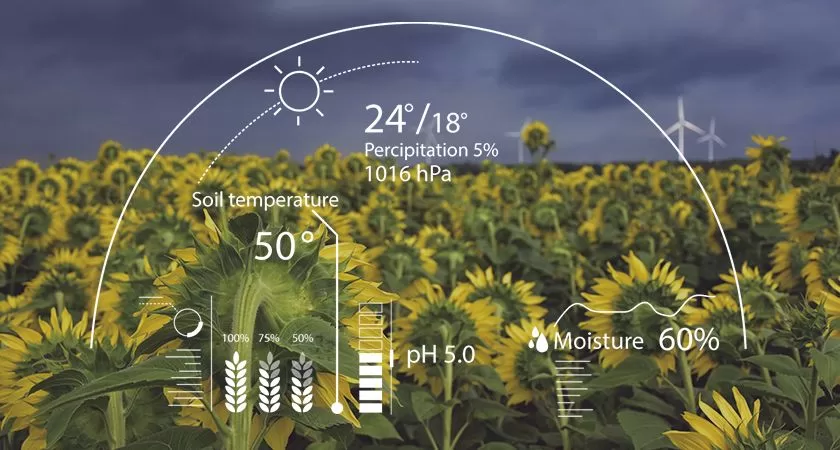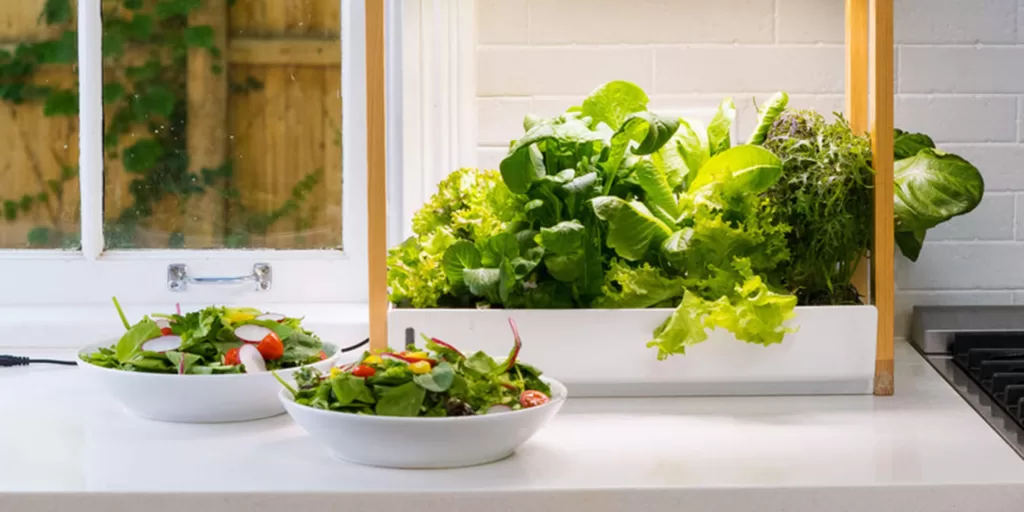Farming can be a high-risk occupation because it involves working with heavy machinery, working with animals, and being exposed to the elements. Accidents and injuries can occur on a farm, and there is also the risk of financial loss due to factors such as natural disasters, market fluctuations, and disease outbreaks. However, there are also many safety measures that farmers can take to minimize these risks, such as wearing protective equipment, following safety guidelines when operating machinery, and having insurance to protect against financial losses. Overall, the level of risk in farming depends on a variety of factors, including the type of farm, the specific work being done, and the precautions that are taken to mitigate risks.
Can farming be a side hustle?
Yes, farming can be a side hustle. Many people are interested in growing their own food or starting a small farm as a way to supplement their income. There are many ways to get started with farming as a side hustle, such as starting a small vegetable garden, raising chickens for eggs or meat, or selling produce at a farmers market. Starting a farm can be a lot of work, but it can also be a fulfilling and rewarding way to make extra money.
Is farming the most stressful job?
It is difficult to say whether farming is the most stressful job because stress is a subjective experience that can vary widely from person to person. Some people might find farming to be a very rewarding and low-stress occupation, while others might find it to be very demanding and stressful. Factors that can contribute to stress in farming include long work hours, physical labor, financial risks, and the potential for accidents or injuries. However, many farmers also find a sense of purpose and satisfaction in their work, which can help to alleviate stress. It is important for farmers to find ways to manage stress and to take care of their mental health, just as it is for people in any other occupation.
Where is the richest soil?
The richest soil is generally found in areas with a long history of agricultural production, where the soil has been repeatedly fertilized and amended over time. Some of the most fertile soil in the world is found in the Prairies of North America, the plains of eastern Europe, and the river deltas of Southeast Asia. These areas have abundant sunshine and access to water, which makes it possible to grow a wide range of crops. Other factors that contribute to the fertility of soil include the presence of nutrients such as nitrogen, phosphorus, and potassium, as well as the presence of beneficial microorganisms. In general, the most fertile soil is found in areas with a temperate climate, where there is a balance between warm temperatures and adequate rainfall.
Which country soil is most fertile?
It is difficult to say which country has the most fertile soil overall, as soil fertility can vary widely within a single country and is influenced by a variety of factors including climate, farming practices, and the presence of nutrients and microorganisms. However, some countries are known for their fertile soil and abundant agricultural production. These countries include the United States, China, Brazil, and India, which are among the top agricultural producers in the world. Other countries with high agricultural output and potentially fertile soil include Argentina, Russia, and France. It is important to note that while these countries may have fertile soil in some regions, there may also be areas with less fertile soil within the same country.
Which farms make the most money?
The type of farm that makes the most money can vary depending on a number of factors, including the location of the farm, the type of crops or livestock being raised, the efficiency of the farming operation, and market conditions. In general, larger farms with a diverse range of crops or animals tend to be more financially successful than smaller farms that focus on a single type of agriculture. For example, a farm that raises a variety of crops and animals and sells them in different markets may be more financially successful than a farm that only grows a single type of crop. Other factors that can affect a farm’s profitability include access to financing, the use of modern technology, and the ability to negotiate favorable prices with buyers. It is also important for farmers to manage their costs effectively in order to maximize their profits.
What is the easiest farm crop to grow?
The easiest farm crop to grow will depend on a number of factors, including the climate and soil conditions of the area where the crop is being grown, as well as the resources and expertise available to the farmer. Some crops are generally easier to grow than others because they are more resistant to pests and diseases, require fewer inputs (such as water, fertilizer, and pesticides), or are well-suited to a wide range of growing conditions. Some examples of relatively easy-to-grow crops include:
- Leafy greens, such as lettuce, spinach, and kale, which can be grown in a variety of soil types and climates and have a short growing season.
- Root vegetables, such as carrots, beets, and potatoes, which are relatively easy to grow and can be stored for long periods of time.
- Herbs, such as basil, cilantro, and mint, which are easy to grow in pots or small garden plots and can be used fresh or dried.
- Grains, such as wheat, corn, and oats, which are widely grown in many parts of the world and are relatively easy to harvest and store.
It is worth noting that even crops that are generally considered easy to grow can still be challenging in certain situations, such as if they are grown in an area with poor soil or adverse weather conditions.
How to make money with 5 acres farm land?
There are many ways to make money with a 5-acre farm, and the specific approach will depend on a variety of factors including the location of the farm, the resources available, and the interests and expertise of the farmer. Some potential options for making money with a 5-acre farm include:
- Growing and selling produce: Depending on the climate and soil conditions, it may be possible to grow a variety of crops such as vegetables, fruits, herbs, or nuts on a 5-acre farm. Farmers can sell their produce directly to consumers at a farmers’ market, through a community-supported agriculture (CSA) program, or to local restaurants or grocery stores.
- Raising livestock: A 5-acre farm may be large enough to support a small herd of livestock such as goats, sheep, or chickens, which can be raised for meat, milk, eggs, or other products.
- Growing flowers: Some farmers have found success by growing flowers on a small scale and selling them to florists, event planners, or directly to consumers.
- Operating a farm stand or farm-to-table restaurant: Farmers can sell their products directly to consumers by setting up a farm stand or by operating a farm-to-table restaurant that serves food made with ingredients grown on the farm.
- Offering agritourism experiences: Some farms offer agritourism experiences such as tours, educational workshops, or overnight stays, which can be a source of income.
It is worth noting that starting a farm can be a challenging and time-consuming endeavor, and it is important for farmers to carefully plan and manage their resources in order to be successful.
How can I make money with 10 acres?
There are many ways to make money with a 10-acre farm, and the specific approach will depend on a variety of factors including the location of the farm, the resources available, and the interests and expertise of the farmer. Some potential options for making money with a 10-acre farm include:
- Growing and selling produce: Depending on the climate and soil conditions, it may be possible to grow a variety of crops such as vegetables, fruits, herbs, or nuts on a 10-acre farm. Farmers can sell their produce directly to consumers at a farmers’ market, through a community-supported agriculture (CSA) program, or to local restaurants or grocery stores.
- Raising livestock: A 10-acre farm may be large enough to support a larger herd of livestock such as cattle, pigs, or goats, which can be raised for meat, milk, eggs, or other products.
- Growing flowers: Some farmers have found success by growing flowers on a larger scale and selling them to florists, event planners, or directly to consumers.
- Operating a farm stand or farm-to-table restaurant: Farmers can sell their products directly to consumers by setting up a farm stand or by operating a farm-to-table restaurant that serves food made with ingredients grown on the farm.
- Offering agritourism experiences: Some farms offer agritourism experiences such as tours, educational workshops, or overnight stays, which can be a source of income.
It is worth noting that starting a farm can be a challenging and time-consuming endeavor, and it is important for farmers to carefully plan and manage their resources in order to be successful.
What is the cheapest crop to grow?
It is difficult to identify a single crop that is the cheapest to grow, as the cost of growing a particular crop can vary widely depending on a number of factors including the location of the farm, the type of soil, the availability of irrigation, the cost of inputs such as seeds, fertilizers, and pesticides, and the market price of the crop. Some crops are generally considered less expensive to grow than others because they require fewer inputs or are more resistant to pests and diseases. Some examples of crops that may be relatively inexpensive to grow include:
- Grains such as wheat, corn, and oats, which are widely grown in many parts of the world and are relatively easy to harvest and store.
- Legumes such as beans and lentils, which are high in protein and can be grown in a variety of soil types.
- Root vegetables such as potatoes, carrots, and beets, which are relatively easy to grow and can be stored for long periods of time.
- Leafy greens such as lettuce, spinach, and kale, which can be grown in a variety of soil types and climates and have a short growing season.
It is important to note that while these crops may be relatively inexpensive to grow, they may not necessarily be the most profitable, as the market price of a particular crop can vary over time and is influenced by a variety of factors.






